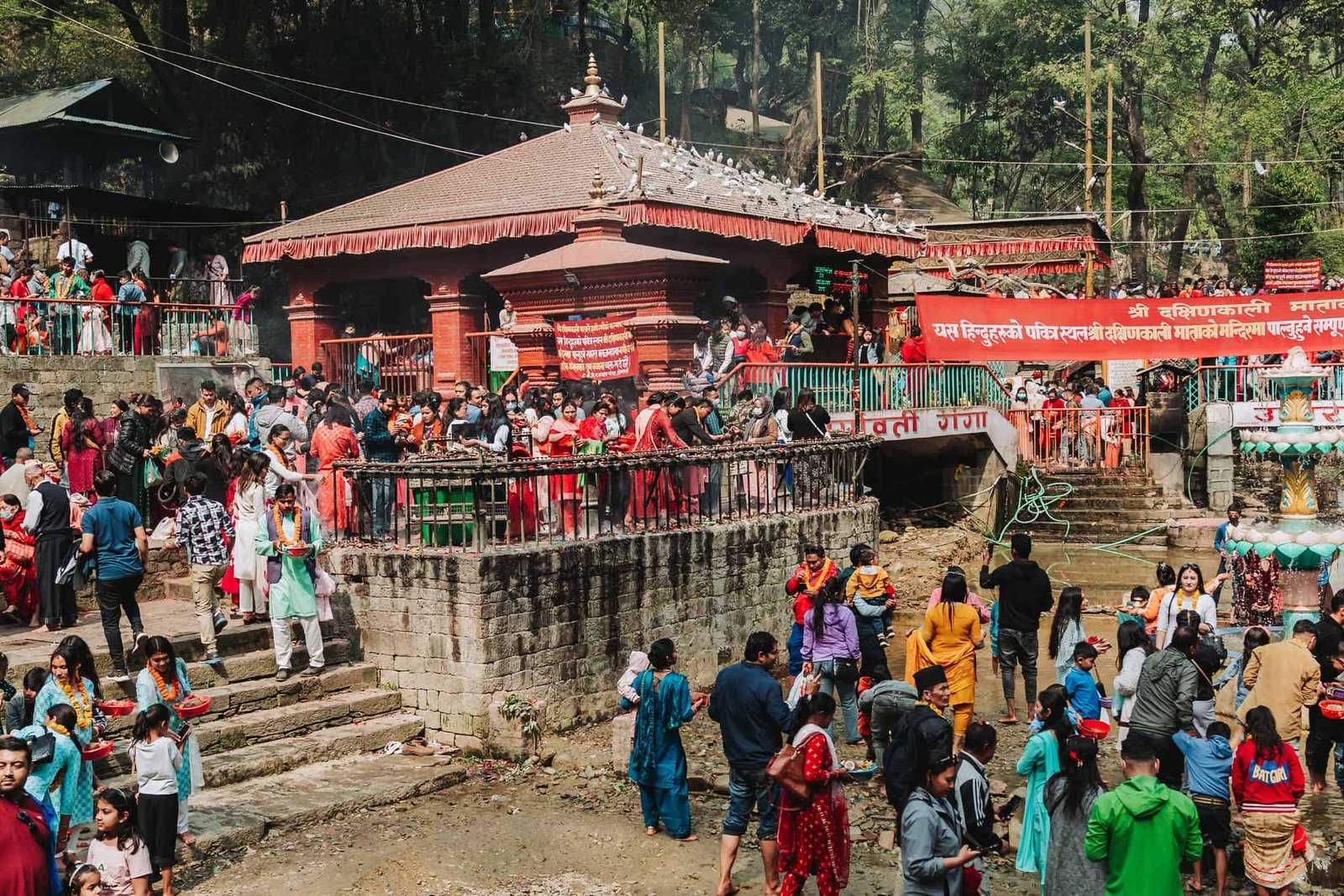Dakshinkali Temple, located in the southwest part of the Kathmandu Valley, is one of the most significant and fascinating temples in Nepal. Dedicated to the goddess Kali, this temple is renowned for its unique rituals and traditions. The temple’s name, “Dakshinkali,” translates to “the goddess of the south,” reflecting its significance in Hindu mythology. For those who seek an immersive cultural experience, Dakshinkali Temple is an unmissable destination.
History
The Dakshinkali Temple has a rich history dating back to the 14th century. According to legend, a Malla king had a dream in which the goddess Kali appeared to him, instructing him to construct a shrine dedicated to her. The king immediately began the construction, and once completed, a stone image of the deity was installed in the shrine. This temple has since become a revered site for Hindu pilgrims, especially during the festival of Dashain.
How to Get There
Dakshinkali Temple is approximately 45 minutes outside of Kathmandu. To avoid congestion on public transportation, it is recommended to take a taxi. There are bus stops at Ratna Park, Old Bus Park, and Martyr’s Road, but the path to the temple is steep and winding, offering stunning vistas along the way. Motorcycles are also a popular option for those seeking an adrenaline rush.
Attractions
- Goddess Kali Idol: The temple is home to a dark stone idol of Kali, depicting her crouching on a carcass, symbolizing triumph over time. The idol is adorned with other unsettling symbols like a skull cup, a severed head, and a sword.
- Animal Sacrifice Rituals: On Tuesdays and Saturdays, the temple witnesses animal sacrifices, primarily male goats and roosters, which are believed to appease the wrathful consort of Lord Shiva.
- Prayer Flag Forest: Visitors can explore the nearby Prayer Flag Forest, where millions of prayer flags dance in the wind, each representing different elements like water and air.
- Mata Temple: A small temple located uphill from the main Dakshinkali Temple offers panoramic views of the forest.
- Tamang Cremation Ground: A short trek from the temple leads to the Tamang Cremation Ground, where Tamangs perform open-air cremations, reflecting their belief in impermanence.
Ticket Information
Non-Hindus are not alloed to enter the temple courtyard where the idol of Kali resides. However, visitors can watch from the surrounding terraces. There is no specific ticket required for entry, but donations are appreciated.
Tips for Visiting
- Tamang Cremation Ground: A short trek from the temple leads to the Tamang Cremation Ground, where Tamangs perform open-air cremations, reflecting their belief in impermanence.
- Mata Temple: A small temple located uphill from the main Dakshinkali Temple offers panoramic views of the forest.
- Prayer Flag Forest: Visitors can explore the nearby Prayer Flag Forest, where millions of prayer flags dance in the wind, each representing different elements like water and air.
- Animal Sacrifice Rituals: On Tuesdays and Saturdays, the temple witnesses animal sacrifices, primarily male goats and roosters, which are believed to appease the wrathful consort of Lord Shiva.
- Respect Local Customs: The animal sacrifices are a deeply spiritual event for locals. Visitors should respect this ritual and avoid taking gruesome photos.
- Prepare for Crowds: Saturdays are particularly busy, with hordes of devotees and tourists. Plan accordingly to avoid congestion.
- Bring Offerings: Local farmers sell produce and offerings like marigolds and coconuts near the temple. Visitors can purchase these to contribute to the festivities.
- Enjoy Local Cuisine: The temple area offers a variety of snacks, including tea and pappadams. Visitors can enjoy a forest barbecue with the ingredients they bring.
- Explore Nearby Sites: Pharping, a nearby town, offers additional attractions like the Asura Cave and Azom Monastery, which are worth exploring.
For those seeking a unique cultural experience in Nepal, Dakshinkali Temple is an essential destination. With its rich history, fascinating rituals, and stunning natural surroundings, this temple is sure to leave a lasting impression on any traveler.
- Explore Nearby Sites: Pharping, a nearby town, offers additional attractions like the Asura Cave and Azom Monastery, which are worth exploring.
- Enjoy Local Cuisine: The temple area offers a variety of snacks, including tea and pappadams. Visitors can enjoy a forest barbecue with the ingredients they bring.
- Bring Offerings: Local farmers sell produce and offerings like marigolds and coconuts near the temple. Visitors can purchase these to contribute to the festivities.
- Prepare for Crowds: Saturdays are particularly busy, with hordes of devotees and tourists. Plan accordingly to avoid congestion.
 Rate it or leave a comment!
Rate it or leave a comment!
New Report
Close
Sign Up for FREE!
Take advantage of all the features by signing up. It's completely FREE and we never spam you!
• Create Travel Plans/Trips
• Collect Places You've Been
• Connect with Like-Minded Travelers
• Contribute to the Community by Posting New Recommendations
Already Registered? Login.





